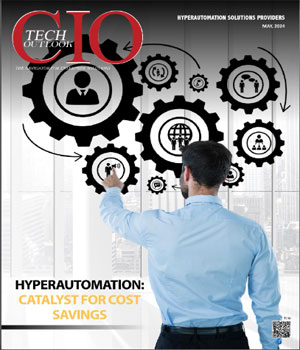
CIOTechOutlook >> Magazine >> February - 2016 issue
Business Assurance
By
 In the era of serious Bimodal IT discussion, every CIO is expected to harvest some technical herbs to create two models of delivery while one keeping the “lights on” with all lamination as ever required to support business to run and to grow and practically when this part of model is working properly one may also expand the horizon to create transformational value through the other mode – more faster more innovative. In-fact it’s critical for the first mode to work in alignment with real business needs so that CIO could also focus on mode two.
In the era of serious Bimodal IT discussion, every CIO is expected to harvest some technical herbs to create two models of delivery while one keeping the “lights on” with all lamination as ever required to support business to run and to grow and practically when this part of model is working properly one may also expand the horizon to create transformational value through the other mode – more faster more innovative. In-fact it’s critical for the first mode to work in alignment with real business needs so that CIO could also focus on mode two.For the mode one to be at its best running metric CIOs and for the matter the organization devote huge operating expense in supporting ICT (Infrastructure & communication technology). CIOs sign contracts with technology partners with stringent service levels, rewards & penalty models with uptime SLAs signed with four and five 9s. Vendors, with all smart work, ensure all SLAs are met.
It also takes a great degree of capital investment in technology tools to manage ICT service, proactive monitoring of infrastructure and applications, change and incident management. And in their automation and integration, create one view dashboard. These tools plays important role in achieving SLAs signed with vendors.
Even after putting all these effort, time, expense and investment many of us and our technology integration partners are not able address the ever standing gap between real business process uptime at the ground vs. technology uptime. The vendor uptime dashboards are always green but do not mandatorily translating into ensuring service levels committed end customers; that remains un-met. And at the hour of peak business this un-met gaps hurts the organization the most. While in most cases technology in its own silo demonstrates that it’s available but its actual benefit often does not reach to targeted business/operation teams, resulting in service gaps towards our end customer.
The main reason for this gap is because ICT operations still to have complete understanding of:
• How business process flows
• Incomplete dependency matrix (internal technology system dependency)
• Wrong application tier definition
ICT operation is never independent and there is always some of the other dependency on other vendors, OEMs and IT teams. One would logically end up agreeing lot of exclusions which creates multiple owners for dependent ICT components on which business process runs. This issue creates conflicts and cause tree of technology excuses and reasoning which do not help business at large.
While engaging with ICT partner to manage the technology operation one should consider business process as a critical nerve of contract and as the ultimate outcome of the engagement. All metric should be focused towards un-met business process, rather than, currently practiced, uptime, availability or for that matter business availability delivered.
A proposed methodology could be adopted to create the framework:
• Carry out the pattern based analysis of peak business time, seasonal transaction volume trend, server resource utilization trends to baseline the severity levels, incident response and resolution time, support resource availability.
• Identify the SLA commitments, to end customers, of each business process and accept them as target deliverable. In this approach the SLA achievement tracking may be done by business and not internally by technology department or its partner. Accept the un-met gaps on business delivery without questioning. This is one of the critical step to become business by oneself and not remain supporting partner to business.
• Critical business processes are studied and plotted in absolute details and then mapped with its dependent web flow, web service, data source, system and integrations. Create the dashboard, synthetic monitoring (if any) scripts exactly to follow the same. This is where the real investment can create real business value.
• Each of these identified configuration items are tagged with related IT Systems (servers, databases, applications, integrations, batch processing, queue, system process, etc.). They are then analyzed for possible optimum responsiveness. It is critical to assess and identify that point of sensitive levers that beyond a point starts contributing to un-met gaps in business processes.
• Monitor all these services for proactive incident management against a predefined threshold value so that any incident can be pre-identified and acted upon to avoid or minimize their impact and finally enhance the overall availability and responsiveness of the business workflow which is practically spread across various systems, application and methods.
• Develop visual dashboards to clearly show which technology components are having problem and their impact on integrated business processes. CIOs may opt for command center setup which is used to proactively communicate business on service disruption and timelines for resolution.
This framework to assure business teams that critical workflow would be available for business transaction and customer service. It then provides the required cushion for a CIO to go beyond run and grow, look and engage confidently for many of those innovative and transformative projects. Finally can act as real catalyst for business transformation and create a possible competitive advantage for the organization. This framework has been beneficial for us to engage into transformative projects while supporting regular “lights on” business.
CXO Insights
The CIO's Imperatives in IT - Enabled Productivity
By Satyen Vyas, President and CEO, SUMMIT IT Solutions Pvt Ltd.
Role of Technology In Business Success: A...
By Yatin Samant, CEO, Handiman Services
Fulfillment of Agile Methodologies with DevOps



